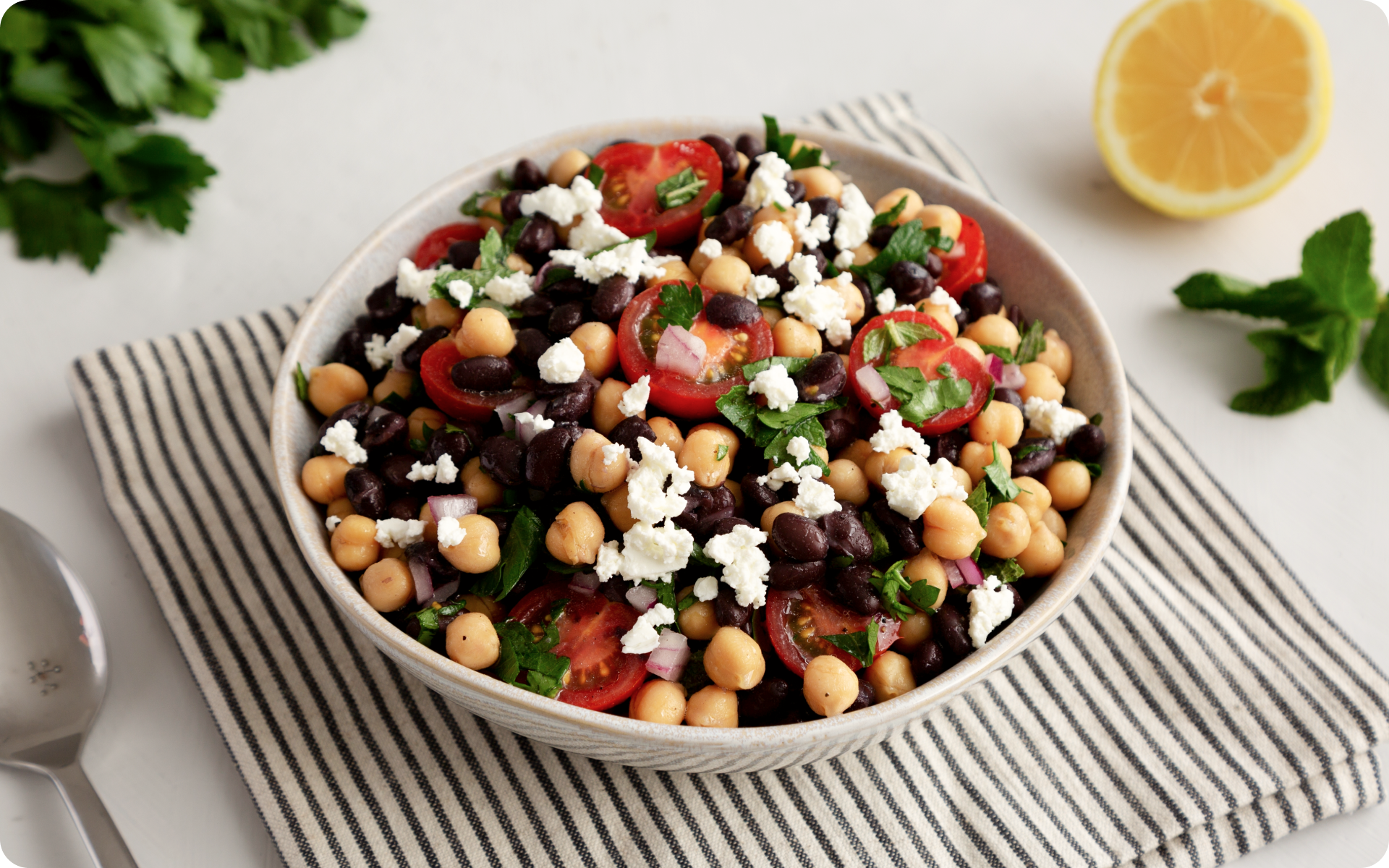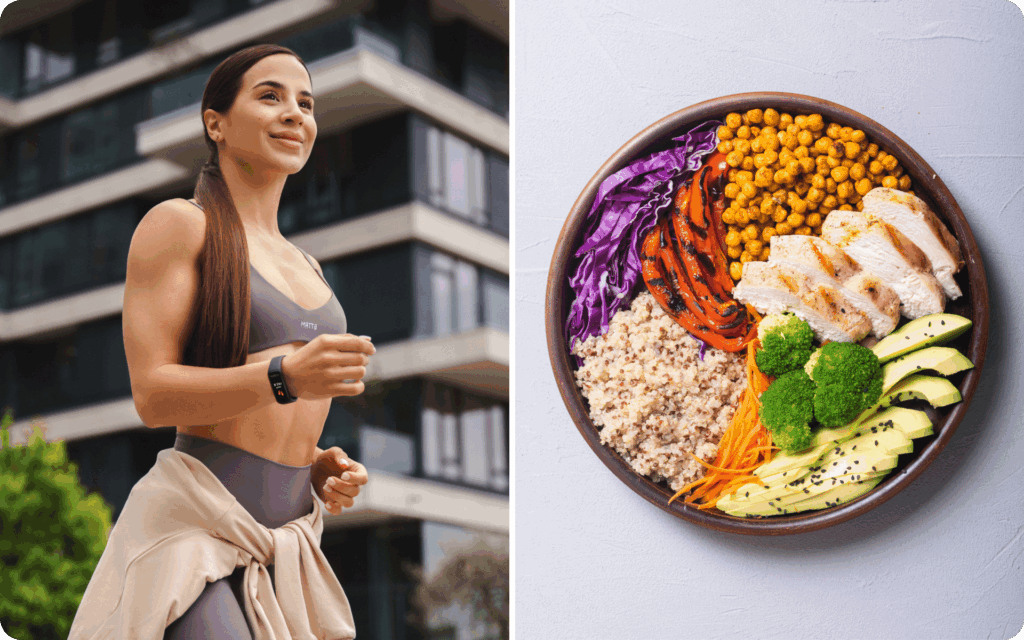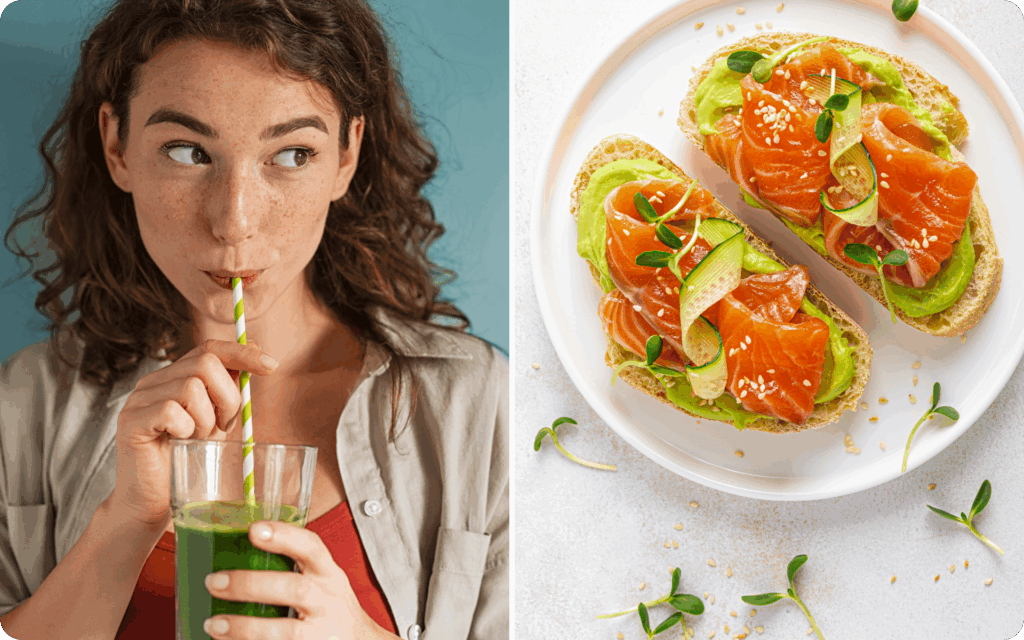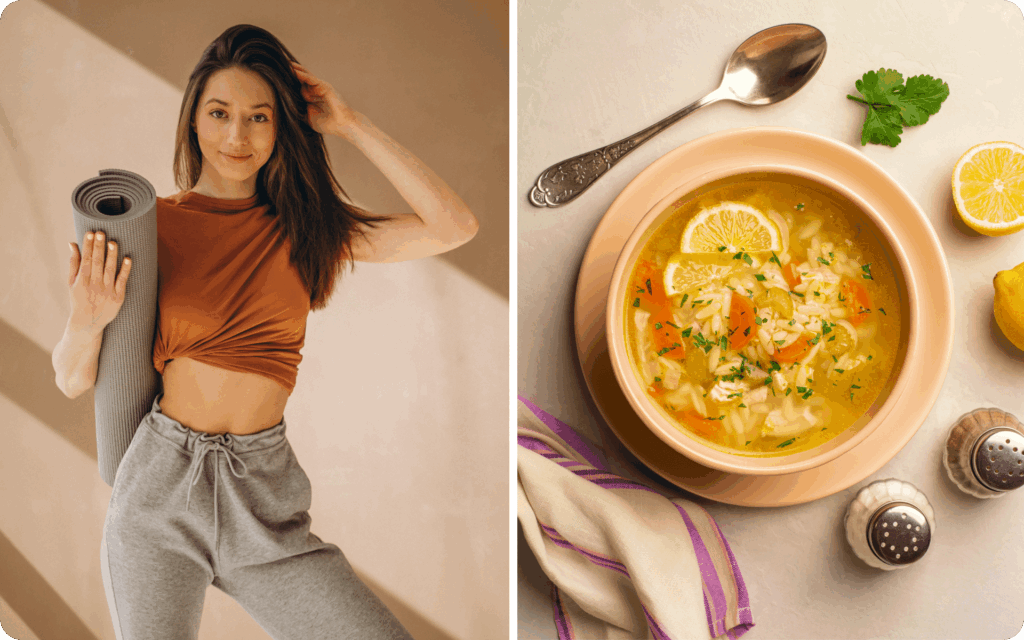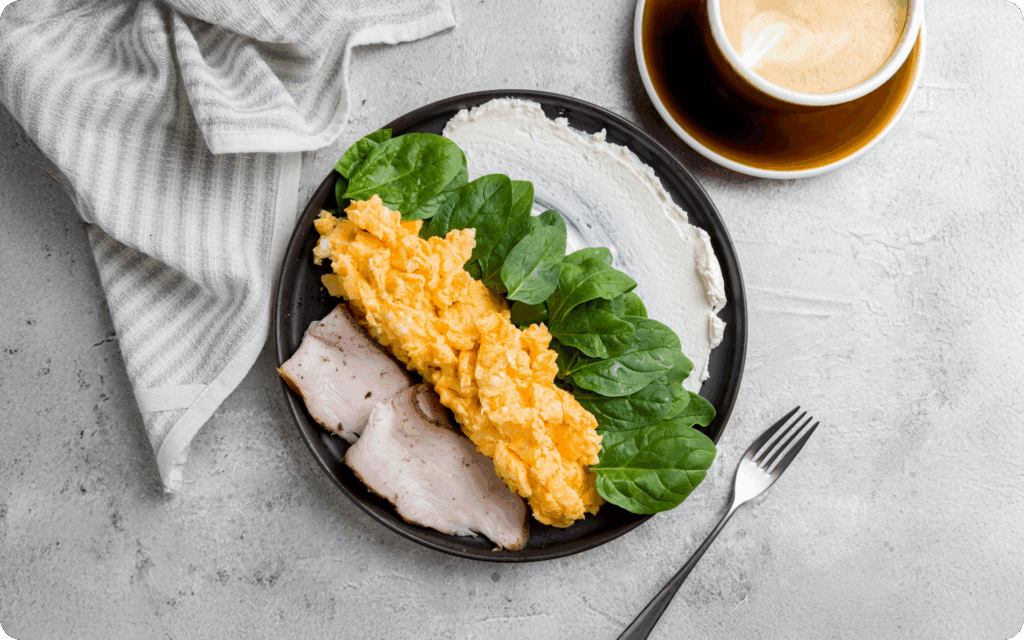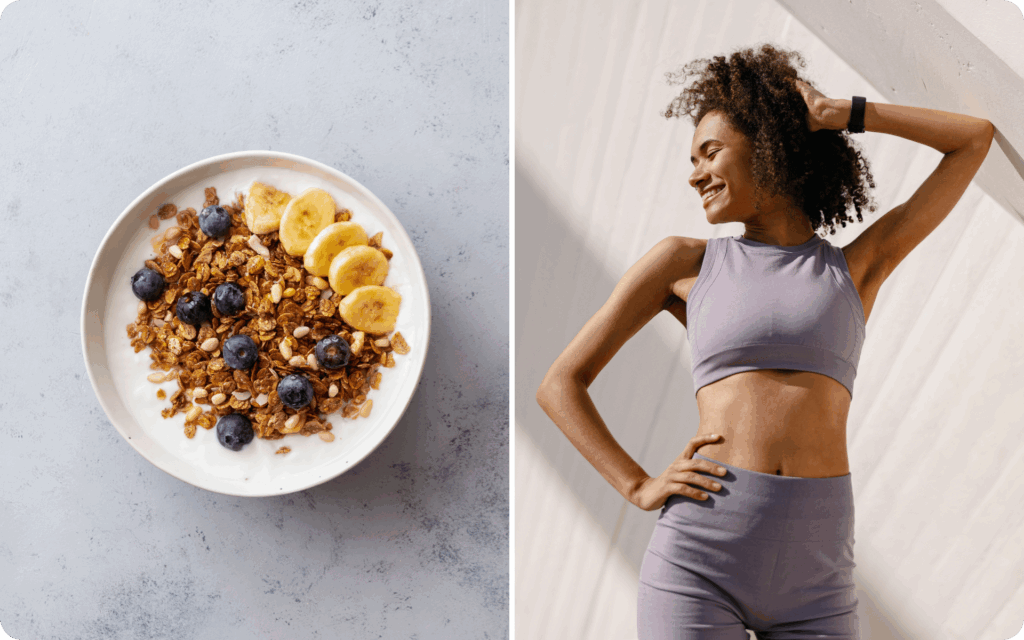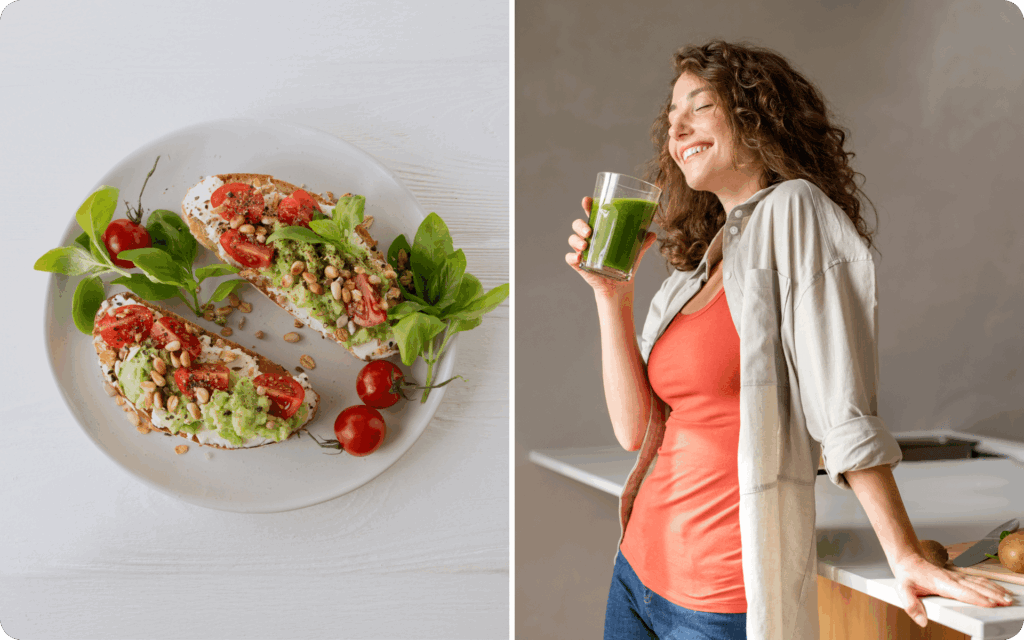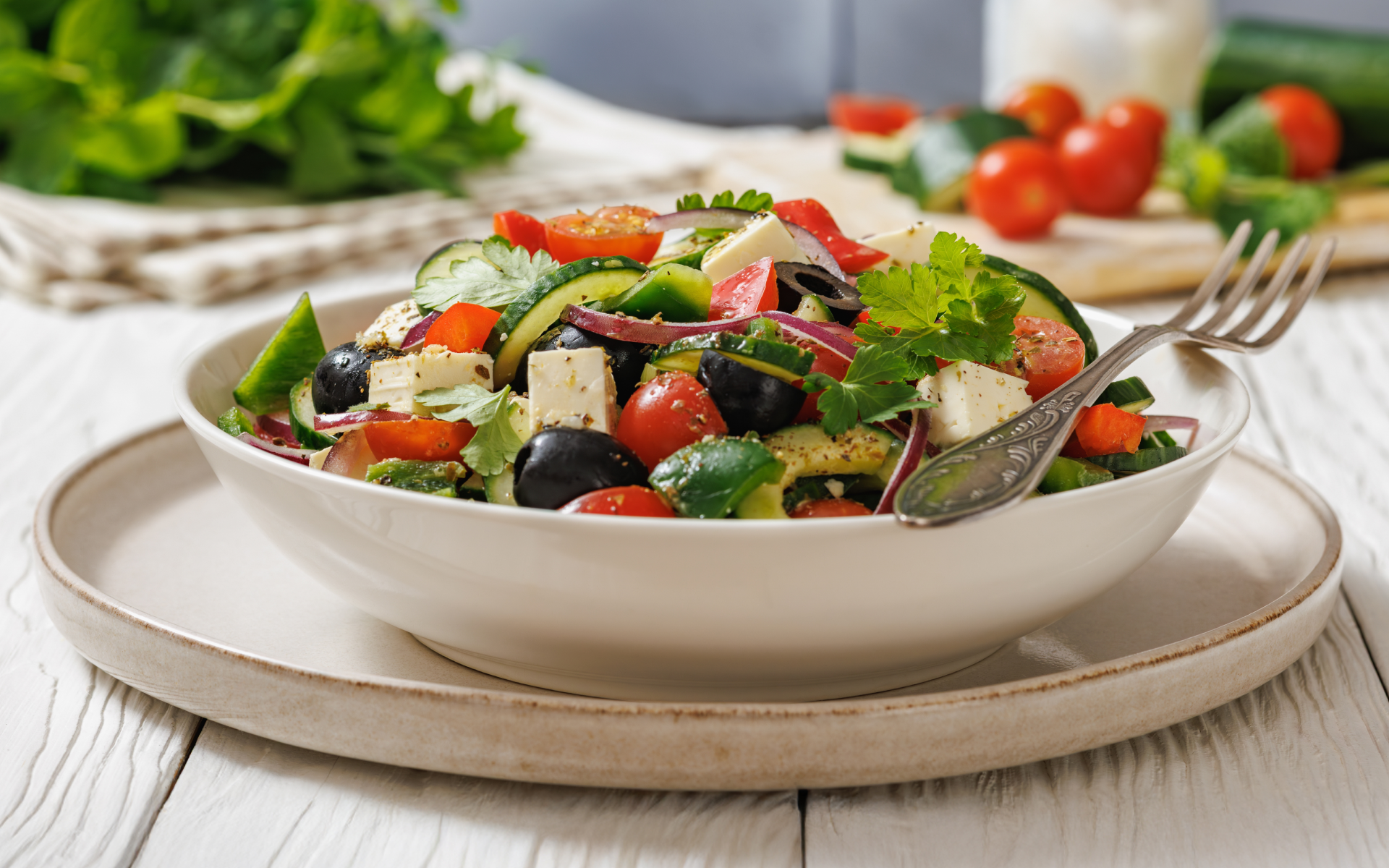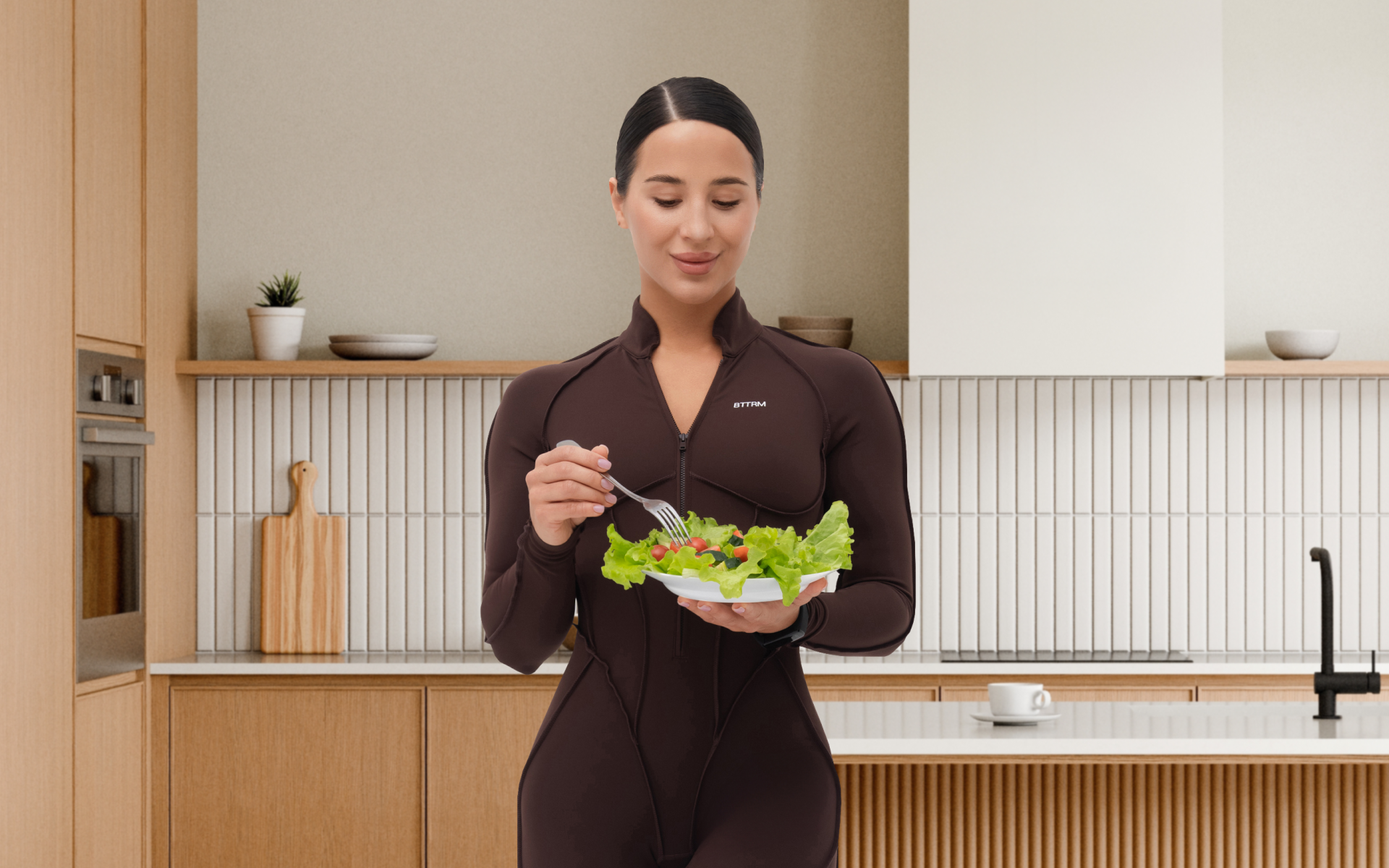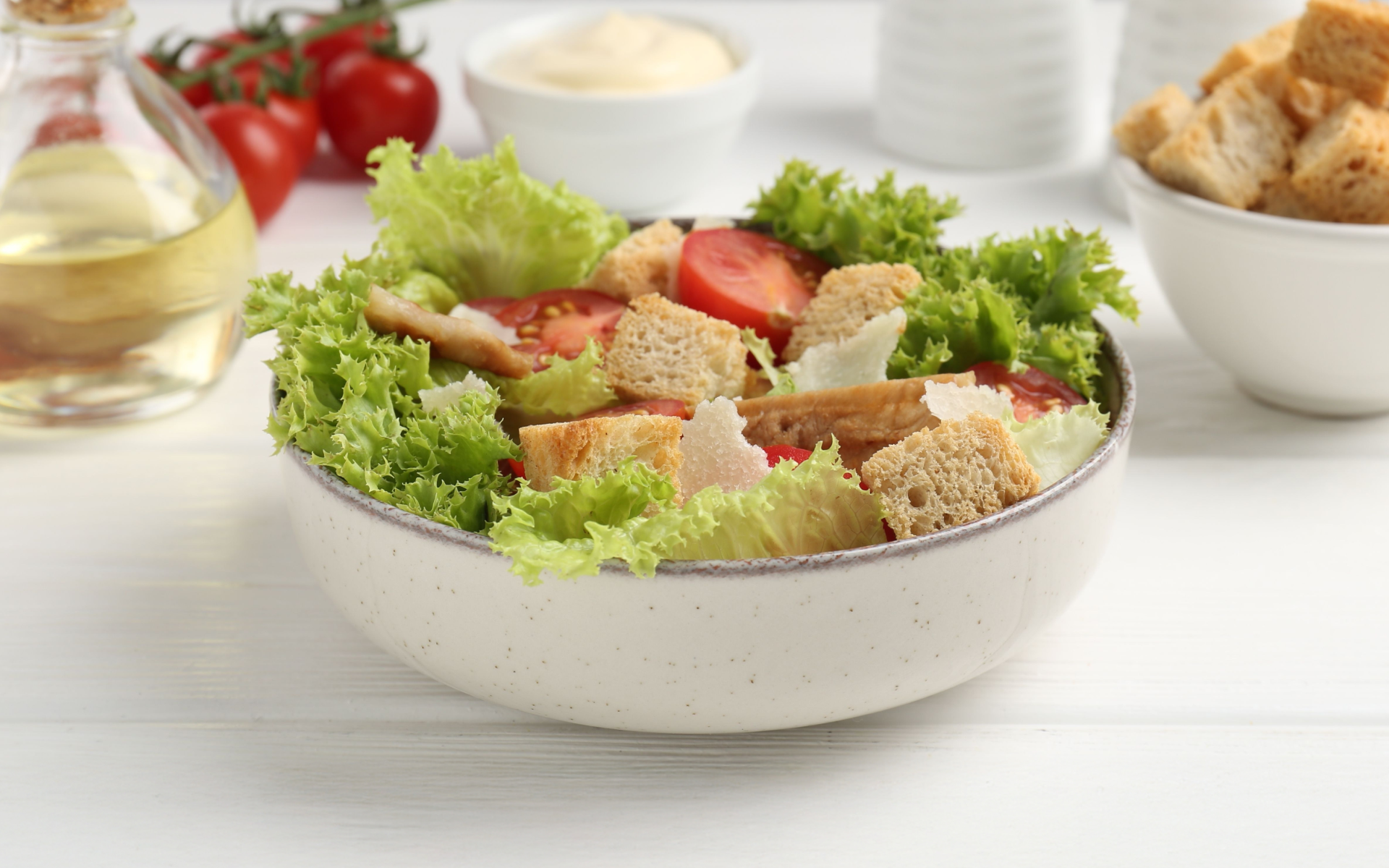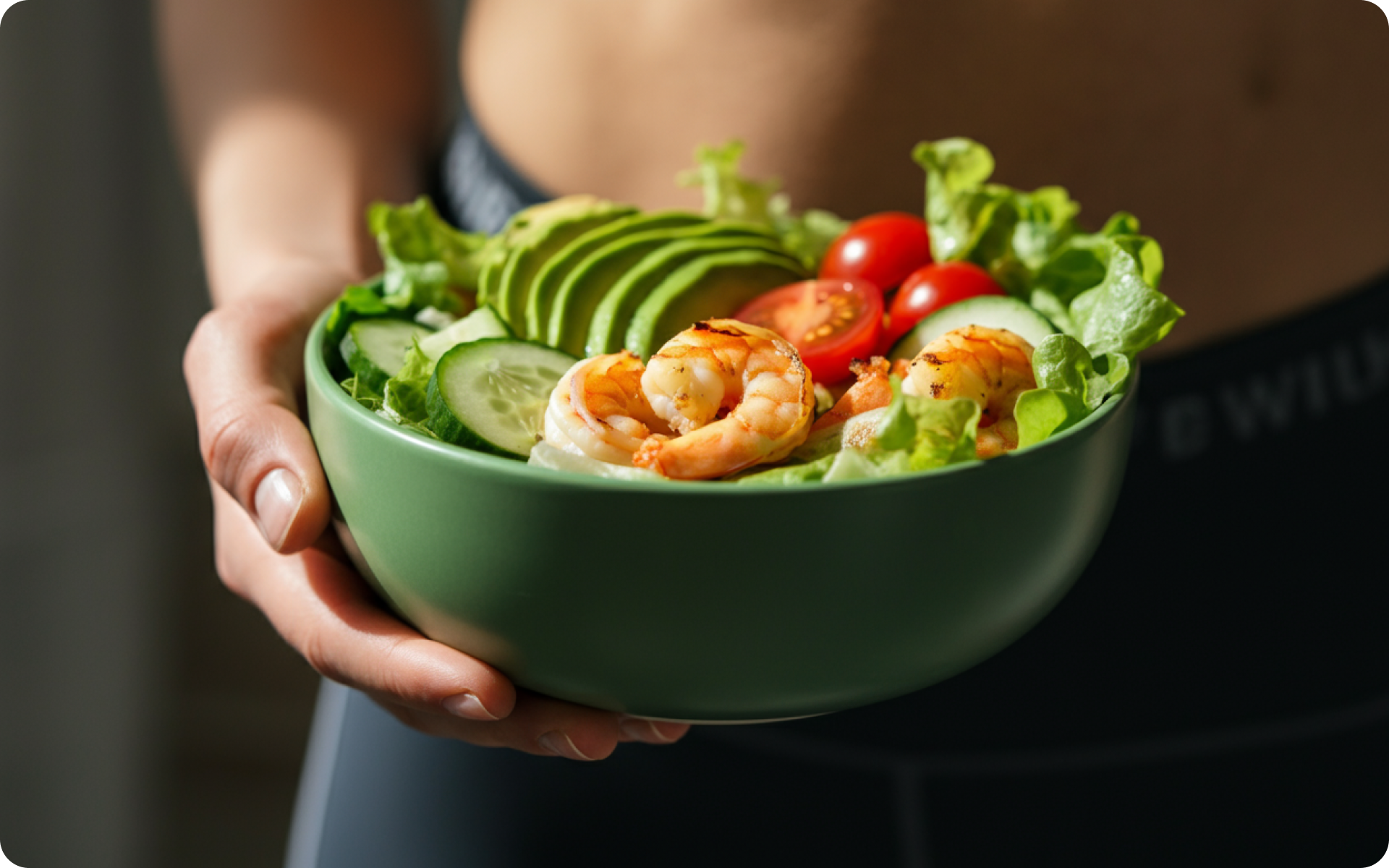A high-protein, high-fiber meal plan is a diet that comprises meals that are rich in protein sources and fiber. Proteins such as lean meats, legumes, nuts, dairy, fish and fiber-rich foods such as vegetables, fruits, whole grains, and beans are some of the examples that make up this diet plan.
This diet aims to achieve approximately 85-98 grams of protein and 30-34 grams of fiber every day. Of course, some versions can vary in terms of protein and fiber percentage ratio depending on individual needs, but the protein intake will remain on the higher side.
What Is a Satiety-Boosting High-Protein, High-Fiber Meal Plan?
A satiety-boosting high-protein, high-fiber meal plan is one that helps you feel full for a longer time. This diet is high in protein and fiber content. A good example of this diet could include high-protein meals such as chicken breast with mixed vegetables or whole grains. Mixed vegetables and whole grains are rich in fiber and make a good combination that can be paired together with a high-protein food. It’s also important to understand that fiber slows down the process of digestion and works well with protein in keeping you full for longer.
Is a High-Protein, High-Fiber Diet Healthy?
Yes, high-protein, high-fiber diets are healthy. They have been found to be effective in promoting healthy weight loss by improving satiety. High fiber intake has been linked to lower LDL or bad cholesterol while high protein helps lower triglycerides, which helps improve cardiovascular health and blood pressure levels (2). In addition, a fiber-rich diet helps improve gut health and prevents constipation.
Read more: How A Healthy Meal Planning App Can Change The Way You Eat Forever
What Are the Benefits of a High-Protein, High-Fiber Meal Plan?
A high-fiber, high-protein meal plan is adopted for the benefits that it provides. It’s a great combination that people consider for a variety of reasons, including:
- Weight Management
Research has shown that a higher protein and high fiber, approximately 25 percent of the total energy from protein, and fiber of approximately 40g/day, is effective in weight management. A controlled trial of the same showed an average loss of 8kg for participants over a period of 12 months compared to a slight gain in the control group who maintained a normal diet (4). The reason is that this diet is helpful in promoting satiety and decreasing hunger, which ensures people crave food less.
- Blood Sugar Control
Protein and fiber foods are considered optimal for their benefit in the stabilization of blood sugar. A fiber-rich diet helps slow sugar absorption into the bloodstream, which reduces the spikes in sugar and insulin that often lead to fat storage and weight gain. This is also helpful in reducing the risk of type 2 diabetes (1).
- Preserves Lean Muscle Mass
A higher protein intake is helpful for preserving lean muscle mass during weight loss. Even for adults, it’s possible to maintain lean muscles by following a high-protein diet. Therefore, it’s important to consume more protein if you’re on a weight loss journey, as it helps you lose weight and maintain your muscle mass and strength (6).
When it comes to weight loss, progress is made by inches, not miles, so it’s much harder to track and a lot easier to give up. The BetterMe: Health Coaching app is your personal trainer, nutritionist, and support system all in one. Start using our app to stay on track and hold yourself accountable!
How Can a High-Protein, High-Fiber Diet Support Weight Loss?
A high-protein diet improves satiety and makes you feel full for longer. Therefore, it reduces food cravings. On the other hand, high fiber slows down digestion while balancing nutrients, and this also makes you feel more full for a longer period of time. When you don’t eat a lot, you cut the calories you consume daily. Most weight loss journeys start with cutting down on calories and then combining this with other approaches, including weight loss best practices and exercise.
How Can I Increase My Protein and Fiber Intake?
You can increase your protein and fiber intake by eating more high-protein and high-fiber foods. Whether at breakfast, morning snack, lunch, or dinner, you need to always ensure your meals contain high-protein food options and high-fiber choices.
Some of the foods you should consider in your daily diet include lean meats such as turkey breast, chicken breast, lean beef, eggs, and salmon. Other foods that are high in fiber include beans, lentils, nuts and seeds, whole grains, fruits, and vegetables.
Which Foods Are Best for Combining Protein and Fiber in One Meal?
Foods such as beans, lentils, brown rice, quinoa, chia seeds, Brussels sprouts, edamame, and peas are some of the best for combining protein and fiber in one meal. Of course, every meal should have a high protein content and high fiber for it to work well for weight loss and other health benefits.
You may also want to combine healthy lean meat with vegetables, plant-based protein grains with legumes, or any other combination, as long as it is high in fiber and protein.
What Does a Balanced Day of High-Protein, High-Fiber Meals Look Like?
A balanced day of a high-protein and high-fiber diet should consist of protein-rich foods and fiber-rich options in every course, whether it’s breakfast, lunch, dinner, or snacks. A perfect example would look like any of the following:
Breakfast
- Scrambled eggs with mixed vegetables
- Hard-boiled egg with kale and cottage cheese
- Peanut butter with chia pudding and blueberries
Lunch
- Tofu and peanut dressings with vegetable salad
- High-protein black bean salad
- Chicken breast with white bean stew
Dinner
- Quinoa with roasted Brussels sprouts
- Turkey meatballs with mixed vegetables
- Quinoa stuffed peppers with chicken breast
Snacks
- Roasted almonds
- Plain Greek yogurt with sliced fruits and vegetables
- Nuts and seeds
What Is a Good Example of a High-Protein, High-Fiber Meal Plan?
There are a variety of high-protein and high-fiber meal plans you can adapt to suit your needs. Here’s just one example:
Breakfast – Vegetable Omelet with Oats
- Eggs and egg whites
- Tomatoes, bell peppers, onions, and spinach
- Rolled oats
- A sprinkle of chia seeds
Mid-Morning Snack – Greek Yogurt Parfait
- Greek yogurt (plain)
- Mixed berries
- Pumpkin seeds or flaxseeds
Lunch – Quinoa Bowl and Grilled Chicken
- Cooked quinoa
- Grilled chicken breast
- Steamed vegetables
Afternoon Snack – Whole-Grain Crackers with Hummus and Vegetable Sticks
- Sliced vegetables
- Whole-grain crackers
- Hummus
Dinner – Lentil Salad and Baked Salmon
- Baked salmon
- Cooked lentils
- Diced tomatoes and onions
- Leafy greens or steamed green beans on the side
In this example, you’ll find a high-protein source and fiber-rich sources that make up every course by ensuring each meal is high in protein and fiber content.
Read more: How to Build a Healthy Dinner Plate, According to Experts
How Do You Create a High-Protein, High-Fiber Meal Plan for Vegetarians?
When it comes to creating a high-protein, high-fiber meal plan for vegetarians, you need to stick to plant-based protein sources and fiber-rich options. So instead of choosing animal protein, you get an alternative plant-based option that’s high in protein content. Of course, most plant-based proteins such as beans, lentils, black beans, chickpeas, tofu, tempeh, and quinoa, among others, are also rich in fiber.
Fiber-rich food options to include are vegetables such as broccoli, green beans, and zucchini, and fruits such as berries, oranges, and apples. You may also include whole grains such as oats, whole-wheat bread, and barley. In addition, legumes, nuts, and seeds are also good for vegetarians.
Therefore, if you’re a vegetarian, you can pair any high-protein plant-based food with a high-fiber one, as mentioned.
Yes, a high-protein, high-fiber diet can improve gut health. This combination has been found to improve the gut microbiome. In addition, it can help in the production of beneficial metabolites such as short-chain fatty acids, which are also helpful for the gut (5). Some quick high-protein, high-fiber snack ideas include Greek yogurt with berries and chia seeds, roasted chickpeas, hard-boiled eggs, cottage cheese, hummus with vegetables, and apple slices with peanut butter. Fruits that are high in fiber and protein include guavas and avocados. Guavas contain approximately 2.55g of protein per 100g, while avocados contain 1.6g of protein per 100g of the fruit. Both fruits are high in fiber content and are therefore excellent high-fiber, high-protein fruits (7). Meats with the most protein include chicken breast and turkey breast (3). However, it’s important to note that there’s no fiber in meat. So, when you want a high-protein meat and a quality source of fiber, you can opt for either chicken breast or turkey breast and high-fiber accompaniments such as vegetables, legumes, lentils, beans, and whole grains. Frequently Asked Questions
Can a high-protein, high-fiber diet improve your gut health?
What are some quick high-protein, high-fiber snack ideas?
Which fruits are high in fiber and protein?
What meat has the most protein and fiber?
The Bottom Line
A high-protein, high-fiber diet is beneficial in many ways. One of the benefits is that it helps with weight management. Protein improves satiety by reducing food cravings and working to reduce the amount of calories you eat daily while on this diet plan.
Fiber is great when it comes to slowing the breakdown of food, and reduces blood sugar spikes. This makes this diet good for weight management and reducing the risk of type 2 diabetes. Therefore, if you’re on a weight loss journey or want to reduce the risk of type 2 diabetes, this may be the ideal meal plan to consider.
DISCLAIMER:
This article is intended for general informational purposes only and does not serve to address individual circumstances. It is not a substitute for professional advice or help and should not be relied on for making any kind of decision-making. Any action taken as a direct or indirect result of the information in this article is entirely at your own risk and is your sole responsibility.
BetterMe, its content staff, and its medical advisors accept no responsibility for inaccuracies, errors, misstatements, inconsistencies, or omissions and specifically disclaim any liability, loss or risk, personal, professional or otherwise, which may be incurred as a consequence, directly or indirectly, of the use and/or application of any content.
You should always seek the advice of your physician or other qualified health provider with any questions you may have regarding a medical condition or your specific situation. Never disregard professional medical advice or delay seeking it because of BetterMe content. If you suspect or think you may have a medical emergency, call your doctor.
SOURCES:
- Dietary Fiber for Glycaemia Control: Towards a Mechanistic Understanding (2018, sciencedirect.com)
- Effect of a High-Protein High-Fiber Nutritional Supplement on Lipid Profile in Overweight/Obese Adults with Type 2 Diabetes Mellitus: A 24-Week Randomized Controlled Trial (2021, onlinelibrary.wiley.com)
- High-protein foods: The best protein sources to include in a healthy diet (2023, health.harvard.edu)
- Protein, Fiber, And Exercise: A Narrative Review Of Their Roles In Weight Management And Cardio-Metabolic Health (2025, pmc.ncbi.nlm.nih.gov)
- Study shows a high-fiber diet rich in plant protein is best for gut microbiota-derived fatty acids (2020, nutrition.org)
- The impact and utility of very low-calorie diets: the role of exercise and protein in preserving skeletal muscle mass (2023, pmc.ncbi.nlm.nih.gov)
- What foods are high in protein? (2025, medicalnewstoday.com)
